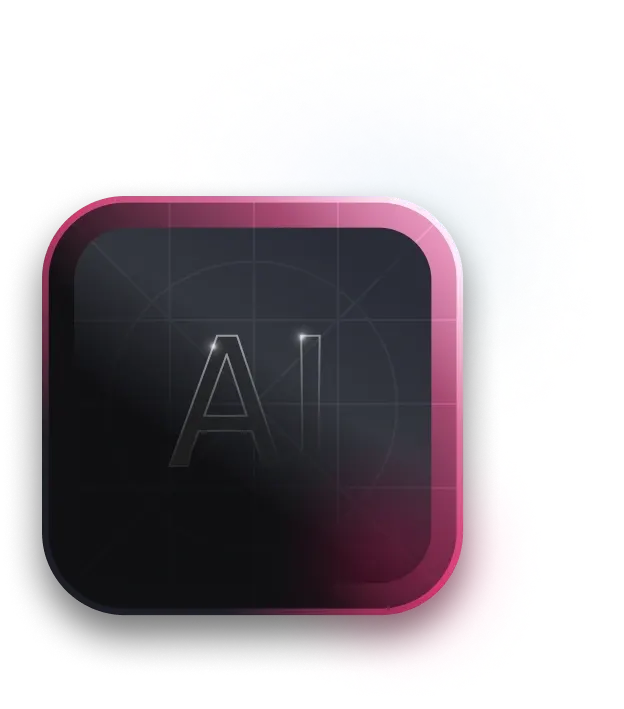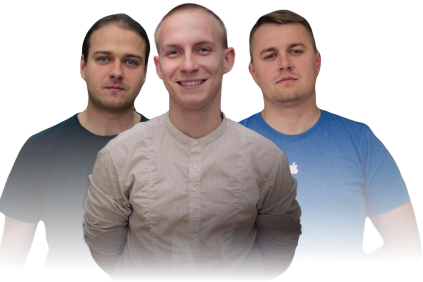The ability to generate stunning images based on text-based descriptions is one of the most innovative and intriguing capabilities of artificial intelligence (AI). The computer becomes a creator, and the results of its creative endeavor look truly magical.
The company that originally introduced the Stable Diffusion (SD) project in 2022 raised $101 million in its initial funding round, standing at a $1 billion valuation today! This high-performance model has become accessible to a broad audience, drawing interest from businesses of all sorts. In this article, we'll share everything we know about Stable Diffusion, how it works, its pros, cons, and prospects.
What Is Stable Diffusion?
Stable Diffusion (SD) is a Generative AI model that enables the autonomous creation, enhancement, and editing of images based on specific textual queries.
At its core lies diffusion technology, a process carried out within the "image information creator" component. Using token embeddings that describe the input text and a randomly initialized array of image information (also called latent), the process generates an information array used to draw the final image.
Visual information is gathered from all images the model has been trained on. Through transfer learning, it can be precisely tuned to specific needs.
How Does Stable Diffusion Work?
SD utilizes Gaussian noise to encode the image. Predictive noise and inverse diffusion are then applied to recreate it. SD is unique as it operates not in pixel space but in a hidden low-dimensional space.
The compressed image is 48 times smaller (16,384 values) than the original input, significantly reducing processing requirements. A smaller hidden space works well because natural images are not random.
The image generation task is formulated as follows:
- Add several layers of noise to the image sequentially.
- Train the neural network to predict how much noise was added in the previous step.
The encoder compresses the image. Forward diffusion gradually adds Gaussian noise until only random noise remains.
The noise predictor plays a crucial role in image denoising, employing convolutional neural networks like U-Net. A Residual Neural Network (ResNet) model does the trick here. It estimates the percentage of noise in the hidden space and removes it. "Cleaning" can be repeated as many times as the user specifies.
Discover how to build an AI gym app
Inverse diffusion iteratively reverses the forward process, and the decoder reconstructs the model into a full-sized image.
The CLIP tokenizer goes through each word, analyzes it, and embeds the data into a 768-value vector. Up to 75 tokens can be used in the prompt. SD uses a special text transformation principle to feed the encoder’s prompts to the noise predictor. Various images can be created simply by using different seed adjustments.
Of course, this is a “nutshell” explanation, but the beauty lies in the network's ability to draw pictures by removing noise from the source.
Stable Diffusion Algorithms and Mathematical Principles
In SD, the Sampling Method employs various algorithms (samplers) to set things in motion:
-
EULER A: Operates swiftly and yields decent results with a tiny number of steps (8-16). However, more interesting images emerge at 20-35 steps. Primarily, it produces images in a "cartoonish" or "hand-drawn" style.
-
EULER: Very effective when used at 30-50 steps. Quite fast.
-
LMS: Mostly produces excellent images at 50 steps, provided you've constructed the query correctly. Like EULER, it works quite fast.
-
PLMS: Similar to LMS but adds more fine details (sometimes meaningless).
-
DDIM: DDIM is coarser, with fewer details and more artifacts, but it performs well even at 8-20 steps. Ideal for quick testing and working with a large volume of images.
-
DPM2/DPM2 A: Very effective in the range of 30-80 steps. Not suitable for experiments as they are very slow. If you're in the query adjustment stage, it's advisable to stick with EULER A or DDIM with fewer steps.
While the full-on stable diffusion definition may not be immediately clear, its practical use is straightforward. The algorithms can be applied to numerous cases, from image processing and graphic rendering to Machine Learning (ML).
When implementing these algorithms, it is crucial to maintain their stability to avoid incorrect results. The decisive factor in the approximation of numerical solutions to differential equations is the analysis of the Courant-Friedrichs-Lewy (CFL) condition. For a stable solution, the size of the time step must be smaller than the value determined by the diffusion coefficient and spatial resolution.
The broad applicability of the algorithms stems from their mathematical ability to simulate natural diffusion processes. Properly implementing these dynamic algorithms requires rigorous stability checks.
The concept of stability in mathematical terms signifies the algorithm's consistency and its internal stability, especially when encountering oscillations. Mathematical principles, including eigenvalues, matrices, and B-stability, are often applied to guarantee this.
Comparing SD to Other AI Models
Dozens of specialized projects have emerged, demonstrating the power of stable diffusion. For instance, a technique called "img2img" has "modernized" game art, transforming scenes from "Aladdin" into 3D, turning children's scribbles into rich illustrations, and much more.
GAN, VAE, Glide, Dall-e-2, Imagen — these popular generative deep learning models also possess unique features and are suitable for various use cases. Each model has pros and cons, so delving into the nuances before choosing an option for a specific task is a must.
GAN (Generative Adversarial Networks)
GANs are trained to generate new data similar to training data sets they had been fed previously. They are built on two separate neural networks: a generator network and a discriminator network.
The generator creates a synthetic sample from random values, and the discriminator attempts to distinguish real values from generated ones.
Key features:
- Trained through adversarial training;
- Produces high-quality samples as the neural network converges;
- A simple compromise between diversity and accuracy using the truncation trick;
- Samples have low diversity. Adversarial losses are not incentivized to cover the whole data distribution flow when catastrophic forgetting occurs or discriminator overtraining happens;
- Challenging to train. Identifying the convergence point of your network can be difficult. Instead of monitoring the decrease of a single loss, you should observe two losses that lack a straightforward interpretation, and it sometimes needs to clarify what's happening with your neural network.
VAEs (Variational Autoencoders)
An autoencoder consists of two connected neural networks: an encoder model and a decoder model. Its goal is to find a method for encoding images into a compressed form (latent space) so that the reconstructed version is as close to the input as possible.
However, often, there's a need to alter or explore variations on existing data, not randomly but in a specific desired way. A variational autoencoder makes the internal space more predictable, more continuous, and less sparse, making hidden variables correspond to a normal distribution.
Key features:
- Samples with low accuracy since the encoder predicts the distribution of the hidden code, often causing overlapping distributions of hidden codes. Consequently, if two inputs have the same hidden code, the optimal choice is the average of the two inputs, leading to sample blurring. GAN and SD models are free from this issue;
- Pixel-level information is not preserved as the latent space is much smaller than the image. This forces the model to average the values of bright and dark pixels to optimize the solution, resulting in blurred output images;
- Samples with high diversity. Maximizing the visual likelihood requires covering all modes of the training data set and maintaining neural networks' bandwidth for each data point.
On top of that, the VAE encoder helps obtain the hidden code for any image, providing additional capabilities beyond image generation.
Our AI and Data Science Case Studies

Advantages and limitations stable diffusion over other models
SD models consist of processes of forward and reverse diffusion. The first adds noise little by little to input data to form a proper amount of white noise. The second reverses the process, progressively removing noise to restore the original data.
Advantages:
- Traditional approaches — deep neural networks, Bayesian analysis of images, and other statistical methods;
- SD is versatile when it comes to covering a lot of input conditions at once;
- Manual adjustment of colors, brightness, contrast, and other parameters;
- High-quality samples due to the nature of noise removal. The model first creates a rough image structure and then adds finer details;
- Intermediate noisy images come in helpful as hidden codes and are equal in size to training images. This is one reason why SD models can generate samples with high accuracy;
- Another significant advantage is stability during training. SD models gradually smooth the data distribution, leading to greater diversity in generated results.
On the flip side, when deploying diffusion models, several challenges may arise.
Challenges:
- The need for extensive computational resources can hinder real-time deployment or large-scale deployment in resource-constrained environments;
- SD models may struggle to create sequential and realistic results for input data significantly deviating from the training data;
- Adapting pre-trained AI models to specific tasks may require fine-tuning or retraining. This process can be resource-intensive and demand a substantial amount of annotated or domain-specific data;
- Making sure results hit the spot in line with human intentions and needs requires careful design. This is why integrating models with operational processes can be highly labor-intensive.
SD models may inherit biases from training data, leading to potentially biased or undesirable results. Due to their complexity, such models are often called "black box" models. Explaining the reasons for their results can be challenging in applications where interpretability is crucial, such as medical diagnostics. So in the long run, user expectations of results may sometimes be unjustified.
Applications of Stable Diffusion
The major capabilities of SD include text-to-image transformation, graphic artwork generation, image editing, and video creation, as well as automated design of graphics, logos, and animations. Given all that, the model can be applied in various fields where data analysis-based event and trend forecasting is required, like:
- Finance: visualizing changes in prices for various assets.
- Marketing: analyzing consumer behavior and demand.
- Science: analyzing and predicting climate data, trends in healthcare, and education.
As an ML algorithm, SD is widely applied for event forecasting in dynamic systems, transportation and energy networks, government management, and logistics. All with a visual edge.
Challenges in Implementing Stable Diffusion Models
Now that we've established that SD is a powerful and quite universally applied model, it's not without its challenges. What challenges will you face in its implementation?
SD runs a relatively resource-intensive process. To achieve reasonably decent results, you'll need an NVIDIA 3xxx series graphics processor with at least 6 GB of RAM. On top of that, you will also need to regulate the issue of copyright protection for created works.
SD also faces degradation and inaccuracies in certain scenarios because the model may be trained on images of low resolution. Some data quality in the LAION database is also not very high.
Let’s develop the perfect software solution for you
The model is not sufficiently trained to distinguish human limbs and faces due to the lack of representative features in the database. Encouraging the generation of such images can confuse the model.
To tailor the model for new use cases, new data and training sessions are required. This hinders the accessibility of the model for developers. The fine-tuning process is sensitive to data quality, so deploying models in consumer electronics becomes challenging.
The creators of SD acknowledge the possibility of algorithmic bias since the model was primarily trained on resources with descriptions in English. As a result, the generated images amplify social, cultural, and racial biases.
Lastly, realistic image synthesis models are potentially dangerous in the information sphere because they can discredit the legal value of photo and video documents.
Final Thoughts
AI and ML demonstrate significant potential in powering the stability of SD algorithms. So we shall expect their further integration. The number of application areas will also widen with the emergence of new algorithms. This includes computer vision, climate modeling, genomics, and traffic forecasting, including celestial trajectories and flying and space vehicles.
Stable diffusion will certainly help boost the safety of autonomous vehicles and enhance the automation of "smart" homes and industrial processes. In healthcare, high-quality visualization will simplify diagnosis and medical procedures. The ability for precise analysis will revolutionize many industries.
Dynamic video generation and processing will be used to create 3D VR content, animations, and even full-length feature films autonomously. All of this is done with just a few phrases. With SD and related tech, the world will enter the era of virtual reality.
We hope the whole stable diffusion meaning becomes clearer for you. Do you have ideas on how to use it in your business? Reach out to explore SD’s applications for your business. Requestum experts are always happy to help and direct a new top-of-the-shelf project.

Our team is dedicated to delivering high-quality services and achieving results that exceed clients' expectations. Let’s discuss how we can help your business succeed.


SHARE: